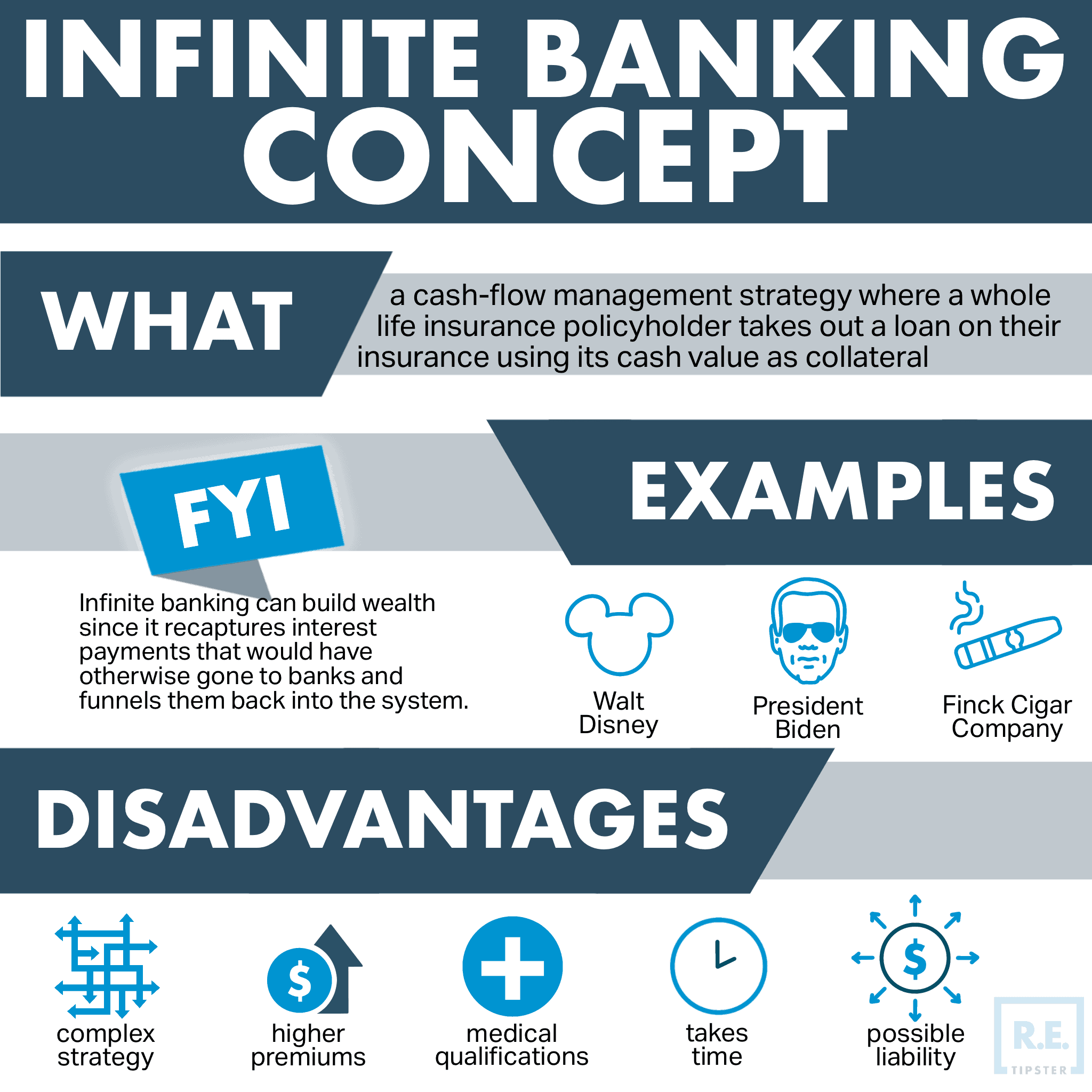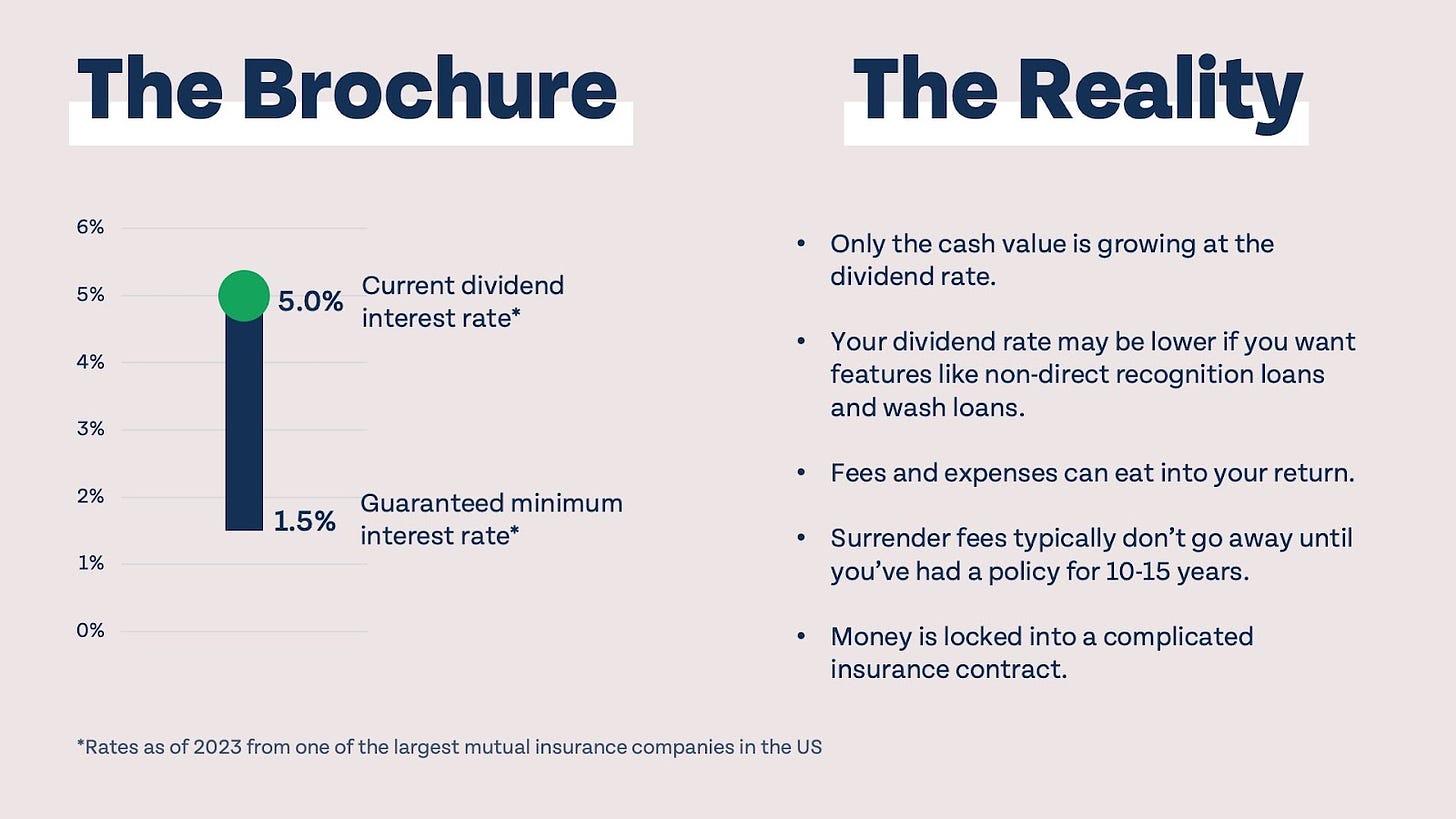All Categories
Featured
Table of Contents
Okay, to be fair you're really "financial with an insurance coverage business" rather than "financial on yourself", but that concept is not as simple to offer. It's a bit like the idea of buying a house with money, then borrowing against the house and placing the money to work in an additional investment.
Some individuals like to discuss the "rate of money", which essentially suggests the exact same thing. In truth, you are simply optimizing leverage, which works, yet, obviously, functions both ways. Truthfully, all of these terms are scams, as you will certainly see listed below. But that does not suggest there is nothing worthwhile to this idea once you surpass the marketing.
The entire life insurance policy industry is plagued by excessively expensive insurance policy, massive payments, unethical sales techniques, low prices of return, and inadequately educated clients and salesmen. However if you desire to "Financial institution on Yourself", you're mosting likely to need to fall to this market and really buy entire life insurance policy. There is no replacement.
The assurances fundamental in this item are vital to its feature. You can borrow versus a lot of kinds of money value life insurance policy, but you should not "bank" with them. As you buy a whole life insurance policy policy to "bank" with, bear in mind that this is a completely different section of your economic plan from the life insurance policy area.
As you will see below, your "Infinite Banking" plan really is not going to accurately provide this crucial economic function. One more problem with the reality that IB/BOY/LEAP counts, at its core, on an entire life plan is that it can make getting a plan bothersome for numerous of those interested in doing so.
Bank Of China Visa Infinite
Harmful pastimes such as SCUBA diving, rock climbing, skydiving, or flying likewise do not mix well with life insurance policy products. That may function out great, given that the factor of the plan is not the death benefit, but bear in mind that acquiring a policy on minor children is more pricey than it needs to be since they are usually underwritten at a "common" rate rather than a chosen one.

The majority of policies are structured to do one of 2 things. Many typically, plans are structured to maximize the commission to the representative marketing it. Cynical? Yes. It's the fact. The compensation on a whole life insurance policy plan is 50-110% of the very first year's costs. Sometimes plans are structured to optimize the fatality advantage for the costs paid.
The rate of return on the plan is extremely important. One of the best methods to take full advantage of that aspect is to get as much cash as feasible into the plan.
The best way to improve the rate of return of a policy is to have a reasonably little "base policy", and after that put even more cash money right into it with "paid-up enhancements". With more cash in the plan, there is even more cash money value left after the prices of the fatality benefit are paid.
A fringe benefit of a paid-up addition over a routine premium is that the commission price is reduced (like 3-4% rather of 50-110%) on paid-up enhancements than the base policy. The much less you pay in compensation, the higher your rate of return. The price of return on your money worth is still mosting likely to be negative for some time, like all cash money worth insurance plan.
However it is not interest-free. In reality, it might cost as high as 8%. Most insurer only supply "direct recognition" loans. With a direct recognition loan, if you borrow out $50K, the dividend rate related to the money value each year just relates to the $150K left in the plan.
Nelson Nash Infinite Banking
With a non-direct acknowledgment financing, the company still pays the exact same reward, whether you have actually "obtained the cash out" (technically versus) the plan or not. Crazy, right? Why would they do that? Who knows? Yet they do. Frequently this function is coupled with some much less beneficial element of the plan, such as a reduced reward rate than you may obtain from a policy with straight acknowledgment lendings (infinite banking software).
The business do not have a source of magic totally free money, so what they provide in one location in the plan need to be extracted from another location. If it is taken from a feature you care much less about and put into a feature you care much more around, that is an excellent thing for you.
There is one even more crucial attribute, generally called "wash loans". While it is fantastic to still have rewards paid on money you have actually obtained of the plan, you still have to pay rate of interest on that particular funding. If the dividend rate is 4% and the car loan is billing 8%, you're not specifically coming out in advance.
With a clean funding, your loan rate of interest is the very same as the returns rate on the policy. So while you are paying 5% rate of interest on the financing, that interest is totally balanced out by the 5% reward on the lending. So in that respect, it acts much like you withdrew the cash from a savings account.

5%-5% = 0%-0%. Same very same. Therefore, you are currently "financial on yourself." Without all three of these variables, this policy just is not mosting likely to function effectively for IB/BOY/LEAP. The most significant problem with IB/BOY/LEAP is individuals pushing it. Virtually all of them stand to benefit from you purchasing into this principle.
Actually, there are several insurance policy representatives discussing IB/BOY/LEAP as a function of entire life who are not really marketing plans with the necessary features to do it! The problem is that those who know the concept best have a large problem of rate of interest and normally pump up the advantages of the principle (and the underlying plan).
Nelson Nash Infinite Banking
You must contrast borrowing against your policy to withdrawing money from your cost savings account. Go back to the start. When you have nothing. No deposit. No money in investments. No money in money worth life insurance. You are confronted with a choice. You can put the cash in the bank, you can spend it, or you can purchase an IB/BOY/LEAP plan.
It grows as the account pays interest. You pay taxes on the rate of interest annually. When it comes time to acquire the boat, you withdraw the money and get the boat. You can conserve some even more cash and placed it back in the financial account to start to make passion once again.
When it comes time to buy the boat, you sell the investment and pay taxes on your long term funding gains. You can conserve some even more cash and acquire some more financial investments.
The cash money value not utilized to spend for insurance and compensations expands for many years at the dividend rate without tax drag. It begins out with adverse returns, however ideally by year 5 approximately has recovered cost and is expanding at the dividend rate. When you most likely to purchase the watercraft, you borrow versus the policy tax-free.
Unlimited Banking Solutions
As you pay it back, the money you paid back starts growing again at the reward rate. Those all job rather similarly and you can contrast the after-tax prices of return.
They run your credit history and give you a financing. You pay passion on the obtained money to the financial institution until the car loan is settled. When it is repaid, you have a virtually worthless watercraft and no cash. As you can see, that is not anything like the initial three options.
Latest Posts
Non Direct Recognition Life Insurance
Direct Recognition Whole Life
Infinite Banking Institute